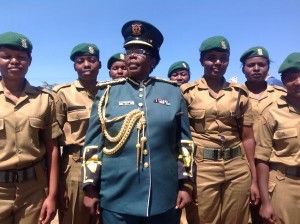
NYS 1988 – Rape in every conflict
The use of rape as a weapon of war is a global phenomena. The rules of war that men have came up with are; kill or maim the men, then rape the women. There is no major conflict that does not involve the rape of women, it has been completely normalized.
http://preventsexualviolenceinconflict.tumblr.com/
Even among those who claim to be fighting in the name of god…..
http://www.theguardian.com/global-development/2015/feb/17/disarm-isis-rape-weapon-war
Those scenes may appear far removed but even in ‘small’ conflicts, when men fight, rape is not far. I will give an example from a time when I would, but for the grace of God, have been caught up in such a conflict.
First, some background….
In the late 1980’s President Moi was fed up with student unrest in the University – so together with Mr Griffith (of Starehe High school, now deceased), he started the National Youth Service (NYS) program. All students who qualified to join public universities had to attend a 3-month ‘discipline’ program. The program lasted a few years in the 1980’s and I was in the last group of 1988.
I gathered no discipline from this ‘training’. The NYS program consisted of running, sleep deprivation, more running, parade drill (marching), poor food and dirty water. I wish they had used our collective energy to do something positive – like what Anne Waiguru came up with – that would have been very useful. We have nothing concrete to show for our time there – a waste of collective energy……but I digress…..
Some important people would come and give talks. We were so sleep deprived that we often found a warm spot and dozed off. There might have been someone in the hall inspired by the talks, but I never met them. At the end of 3 months, we were fit, very aware that our bodies could take a lot of crap and survive. I did not feel any more willing to obey random commands and felt invincible – I doubt this was what President Moi or Mr Griffith wanted.
The same NYS camps were offering training to non-university students – on top of the rubbish running about and drills, they were offered blue-collar training to be mechanics, carpenters, plumbers etc. This group was referred to as ‘regulars’. We did not mix with them and they comprised a small fraction in the camps.
Back to the story…….
We ‘graduated’ from Gilgil in 1988 and joined University. But Moi day in 1988 was special for Moi, he was celebrating 10 years in power. They decided that University students in their NYS uniforms would also march past the President – perhaps to show the president that NYS had reformed university students to be obedient enough to march before the President without protesting about one thing or another.
We were first years then, we did not mind, it would be a good break from studies. We were to go to Gilgil and practice our marching moves at the parade ground and then be ferried to perform at the national stadium before the President on 10th October 1988.
So, we packed our bags and waited. The green buses from NYS came to collect us – somewhere near State House Road. In the usual fresher excitement, some people rushed to get into the buses. My friends and I were in no hurry. On day one, the rush to the bus did not cease, so those of us remaining went back to our halls of residence, day two we waited and again did not get space on the bus. On the third day, we leisurely got into the bus.
We arrived in Gilgil expecting to find people in their green NYS uniforms marching at the parade ground. It did not take us long to realise that there was not going to be any marching before the president. Something terrible had happened at the camp.
On the first night that the students had arrived at Gilgil, the male university students had some altercation with the male ‘regulars’. The male university students were feeling haughty, they did not want to obey NYS regulations, after all, they had graduated. They were intent on behaving like University students. They went out into Gilgil town and came back to the camp drunk. The ‘regulars’ seized their chance to ‘teach them a lesson’ and begun to viciously beat up the drunk students.
But that was not enough….
According to one of my friends, who was there that first night, a group of about 10 ‘regulars’ came to their dormitory (these were large spaces with beds arranged tightly together). They jumped in through the windows which had no shutters. The ‘regulars’ started to whip and beat the girls. Lucky for this particular group, there were about 100 girls and the ‘regulars’ realised they were outnumbered. They left this dormitory. This friend said they could hear other girls screaming, but assumed that the girls were also being beaten up and would fight of the regulars.
However, some dormitories had only 10 or so girls. They were completely outnumbered by the ‘regulars’ who dragged these girls outside the dormitory and gang raped.
In the morning, as the students walked to the parade ground, the effects of the night of chaos were clear. Female students had been raped, their male counterparts were so badly beaten, my friend talked about seeing blood everywhere.
The vice-chancellors of all public universities were flown by helicopter to Gilgil. The students thought that they would voice their grievances. Instead the VC’s read the riot act – telling them to vacate the camp and go home – they were to report to their local chiefs until a radio announcement would let them know when to return to university. As the students congregated at the parade ground, windows were fitted into the female dormitories. Were they to report that the ‘regulars’ had gotten in through the windows – no one would believe them.
While all this was happening, my colleagues and I were filling into buses and being ferried to Gilgil. When we arrived in Gilgil, our male counterparts from the University were never too far. They were determined that the ‘regulars’ would not repeat what they had done before.
On the morning of 10th October, the Gilgil camp was surrounded by armed GSU men. On the hills around the camp, we could see men on horseback – the anti-stock theft unit had been called in. It was clear to us that any amount of force would be used to keep us in the camp for the day. We were not going to ruin Moi’s day.
So we milled about and at about 6pm were ordered to clear out of the camp. It was dark as we made our way to the buses – there was confusion – but there was nothing we could do.
When we went back to our villages where we reported to the chiefs regularly. It was a clever ploy to keep us from congregating and discussing the event. When we returned to university, no one talked publicly about the rapes or the violence meted on the students. The news never even made it to the press.
I have no idea how many girls were raped and it is likely, we shall never know.
The girls clearly felt too ashamed to come out and speak. They knew that nothing would be done about the perpetrators. We cannot even say that the violence and rape of NYS 1988 were forgotten as they were never even allowed into our memories as a nation.
During my time at the University of Nairobi, our male counterparts would always let us know in advance when a riot was underway – as female students no one needed to tell us that should we be caught by riot police – we would be raped. The female hostels – Box and Hall 12 – would be empty before any strike
Rapes are rarely reported even in a time of peace. This is a global phenomena – women who are raped are too traumatised to have to recant what they have been through. At a time of war, it’s even worse. There is blood everywhere from the dead and the dying, there are children who have been raped. The women focus on survival. If they live in a culture that sees them as ‘spoiled goods’ due to the rape – they will be ostracised or killed. Many commit suicide. They give birth to unwanted children – the very reason for rape in conflicts – to force women to give birth to ‘enemy’ children. Those who are not ostracised and do not get pregnant, are mentally tormented by their ordeal, without counselling, they find it hard to get back with their lives.
So efficient is rape as a weapon of conflicts large and small. It’s in the DNA of war and I do not believe it will be eliminated unless conflicts end altogether. How does the World Health Organization intend to Eliminate all forms of violence against all women and girls – under these circumstances?
Remember to vote healthkenya.co.ke as best health blog 2016
“Unveiling Kenya’s Digital Tapestry: 10 Captivating Blogs That Illuminate the Heart of the Nation”
Comments
-
-
Mary
Count on my vote!
Comments are closed.






Robert
Well thought out article.